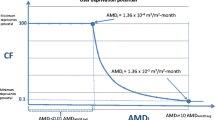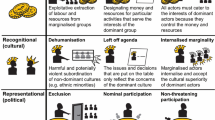Abstract
Capacity development has been regarded as one of many measures to empower the abilities of nations to adapt to a changing climate. Promoting public engagement in water conservation, especially among young people since they will be leading decision making in the near future, is one effective strategy for adapting to the changing climate. This research presented a water footprint adaptation (WF) approach which attempted to link climate adaptation and capacity development with saving water strategy. The approach was tested in cooperation with two universities in Shaanxi province aiming to develop a starting point for WF evaluation and develop an improvement response. The results showed that the college students in our samples reduced their direct and indirect water footprints by 27.39% and 6.50%, respectively, in the post-intervention phase. The evaluation of the improvements proved that the WF approach to be efficient, the awareness of the college students on the matter could be increased. Additionally, the findings of the research indicated that the college students became change agent, expressing the desire to act as multipliers and to help the movement and spread of important knowledge about methods for alleviating water stress and about vulnerability to the changing climate. As expected, the awareness of water scarcity and perceptions of climate change had statistically significant effects on the water footprints, which was consistent with our hypothesis. Our approach helped participants develop capacity by revealing the linkage between their local level actions and the various aspects of adaptation to changing climate at the global level. This strategy will provide a comparative basis for water policy makers to adopt appropriate strategies to address matters related to water shortages and finally enhance sustainable adaptation to changing context.





Similar content being viewed by others
Data availability
All data generated or analyzed during this study are included in this published article.
References
Ahmad D, Afzal M (2020) Climate change adaptation impact on cash crop productivity and income in Punjab Province of Pakistan. Environ Sci Pollut Res. https://doi.org/10.1007/s11356-09368x
Aulong S, Chaudhuri B, Farnier L, Galab S, Guerrin J, Himanshu H, Reddy PP (2012) Are South Indian farmers adaptable to global change? A case in an Andhra Pradesh catchment basin. Reg Environ Chang 12:423–436
Beatty A (2012) Climate change education. The National Academies press, Washington
Bollen J, Bring C (2014) Air pollution policy in Europe: quantifying the interaction with greenhouse gases and climate change policies. Energy Econ 46:202–215
Chang IC (2020) A case study for identifying the potential challenge of water resources in the Yilan area of Taiwan: using an adaptive water footprint approach. Environ Sci Pollut Res 27:12725–12745
Chapagain AK, Hoekstra AY (2007) The water footprint of coffee and tea consumption in the Netherlands. Ecol Econ 64:109–118
Chen YN, Li BF, Li Z, Li WH (2016) Water resource formation and conversion and water security in arid region of Northwest China. J Geogr Sci 26:939–952
Chen C, Jiang YL, Ye ZY (2019) Sustainably integrating desalination with solar power to overcome future freshwater scarcity in China. Global Energy Interconnect 2:98–113
China National Bureau of Statistics (2019) China Statistical Yearbook, China Statistics Press
Corner A, Roberts O, Chiari S (2015) How do young people engage with climate change? The role of knowledge, values, message farming, and trusted communicators: engaging young people with climate change. Wiley Interdiscip Rev Clim Chang 6:523–534
Eastwood M (2009) Principles of Human Nutrition, Hoboken, Wiley, p 689
Elmadfa I (2012) Österreichischer Ernährungsbericht 2012 (Austrian Nutrition Report). Bundesministerium für Gesundheit, Wien, p 412
Fernández M, Alférez A, Vidal S, Fernández MY, Albareda S (2016) Methodological approaches to change consumption habits of future teachers in Barcelona, Spain: reducing their personal ecological footprint. J Clean Prod 122:154–163
Flörke M, Schneider C, McDonald RI (2018) Water competition between cities and agriculture driven by climate change and urban growth. Nat Sustain 1:51–58
Funatsu BM, Dubreuil V, Racapé A, Debortoli NS, Nasuti S, Tourneau FML (2019) Perceptions of climate and climate change by Amazonian communities. Glob Environ Chang 57:101923
Gómez-Llanos E, Durán-Barroso P, Matías-Sánchez A (2019) Management effectiveness assessment in wastewater treatment plants though a new water footprint indicator. J Clean Prod 198:463–471
Haida C, Chapagain AK, Rauch W, Riede M, Schneider K (2019) From water footprint to climate change adaptation: capacity development with teenagers to save water. Land Use Policy 80:456–463
Hoekstra AY (2013) Sustainable, efficient and equitable water use: the three pillars under wise freshwater allocation. Wiley Interdiscip Rev Water 1:31–40
Hoekstra AY, Chapagain AK (2007) Water footprints of nations: water use by people as a function of their consumption pattern. Water Resour Manag 21:35–48
Hoekstra AY, Chapagain AK, Aldaya MM, Mekonnen MM (2011) The water footprint assessment manual: setting the global standard. Earthscan, Earthscan LLC, Washington, p 203 (xviii)
Hoekstra AY, Chapagain AK, Oel PV (2019) Directory of Open Access Books. Progress in Water Footprint Assessment. Multidisciplinary Digital Publishing Institute
Holmatov B, Hoekstra AY, Krol MS (2019) Land, water and carbon footprints of circular bioenergy production systems. Renew Sust Energ Rev 111:224–235
Iglesias A, Garrote L (2015) Adaptation strategies for agricultural water management under climate change in Europe. Agric Water Manag 155:113–224
IPCC (2014) Climate change 2014: impacts, adaptation, and vulnerability. In: In: contribution of working group II to the fifth assessment report of the intergovernmental panel on climate change, 1820 (ed) edn. Cambridge University Press Cambridge, New York
IPCC (2018) In: Masson-Delmotte, V., Zhai, P., Portner, H.O., 2018. An IPCC special report on the impacts of global warming of 1.5°C. Above pre-industrial levels and related global greenhouse gas emission pathways, in the context of strengthening the global response to the threat of climate change, sustainable development, and efforts to eradicate poverty, In Press
IPCC (Intergovernmental Panel on Climate Change) (2013) Climate change 2013 the physical science basis. http://www.ipcc.ch/report/ar5/wg1/. Accessed June 2019
Jalava M, Kummu M, Porkka M, Siebert S, Varis O (2014) Diet change-a solution to reduce water use? Environ Res Lett 9:074016
Lee YJ, Tung CM, Lee PR, Lin SC (2016) Personal water footprint in Taiwan: a case study of Yunlin County. Sustainability 8:1112
Lucio M, Giulia R, Lorenzo C (2018) Investigating attitudes towards water savings, price increases, and wiliness to pay among Italian University Students. Water Resour Manag 32:4123–4138
Lyle G (2015) Understanding the nested, multi-scale, spatial and hierarchical nature of future climate change adaptation decision making in agricultural regions: a narrative literature review. J Rural Stud 37:38–49
Mekonnen MM, Hoekstra AY (2011) The green, blue and grey water footprint of crops and derived crop products. Hydrol Earth Syst Sci 15:1577–1600
Miglietta PP, Leo D, Toma P (2017) Environmental Kuznets curve and the water footprint: an empirical analysis. Water Environ J 31:20–30
Ministry of Water Resources of the People’s Republic of China (2012) Briefings on the opinions of the state council on implementing the strictest water resources management system. China water resources Bulletin: 2012. www.Chinawater.net.com.cn
Moss RH, Avery K, Baja M, Burkett AM, Chischilly J, Dell PA (2019) Evaluating knowledge to support climate action: a framework for sustained assessment. Report of an independent advisory committee on applied climate assessment. Weather. Clim Soc 11:465–487
Mu L, Wang CC, Xue BR, Wang H, Li SY (2019) Assessing the impact of water price reform on farmers’ willingness to pay for agricultural water in northwest China. J Clean Prod 234:1072–1081
Neunteufel R, Richard L, Perfler R (2012) Wasserverbrauch and Wasserbedarf: Auswertung empirischer Daten zum Wasserverbrauch (Water use and water demand-analysis of empirical data on water use) (de) (Wien)
Orlowsky B, Hoekstra AY, Gudmundsson L, Seneviratne SL (2014) Today’s virtual water consumption and trade under future water scarcity. Environ Res Lett 9:74007
Palutikof JP, Boulter SL, Stadler F, Vidaurre ACP (2019) Tracking the progress of climate change adaption: an Australian case study. Environ Sci Pol 101:126–135
Payne K (2013) The effects of self-efficiency on pro-environmental intentions. Plymouth Stud Sci 6:224–238
Rayner S (2019) Rhythms of prediction in South Australian water resource management. Weather Clim Soc 11:277–290
Riede M, Oberrauch A, Link S (2017) Climate change communication beyond the ‘ivory tower’: a case study about the development, application and evaluation of science-education approach to communicate climate change to young people. J Sustain Educ 12:1–24
Ru XJ, Qin HB, Wang SY (2019) Young people’s behavior intentions towards reducing PM2.5 in China: extending the theory of planned behavior. Resour Conserv Recycl 141:99–108
Saurí D (2013) Water conservation: theory and evidence in urban areas of the developed world. Annu Rev Environ Resour 38:227–248
Seelen LMS, Flaim G, Jennings E, Domis LNDS (2019) Saving water for the future: public awareness of water usage and water quality. J Environ Manag 242:246–257
Seyranian V, Sinatra GM, Polikeoff MS (2015) Comparing communication strategies for reducing residential water consumption. J Environ Psychol 41:81–90
Statistik Austria (2011) Konsumerhebung 2009/10 (Consumption Survey 2009/10). http://www.statistik.at/web_de/statistiken/soziales/verbrauchsausgaben/ konsumerhebung (Accessed 8 April 2014)
UNDP (2008) Capacity Development: Practice Note. UNEP, New York
UNESCO (2017) The UNESCO Climate Change Initiative. Climate Change Education for Sustainable Development. Retrieved from https://unesdoc.unesco.org/images/0019/001901/190101E.pdf. Accessed June 2019
United Nations (2015) Transforming our world: the 2030 Agenda for Sustainable Development: Resolution Adopted by the General Assembly on 25 September 2015. (A/RES/20/1, United Nations)
Vanham D, Mekonnen MM, Hoekstra AY (2013) The water footprint of the EU for different diets. Ecol Indic 32:1–8
Vulturius G, Davis M, Bharwani S (2016) Building bridges and changing minds: insights from climate communication and practice: Discussion Brief. Stockholm Environment Institute, Stockholm
Wang YX, Wang Y, Su XL, Qi L, Liu M (2019) Evaluation of the comprehensive carrying capacity of interprovincial water resources in China and the spatial effect. J Hydrol 575:794–809
Wang KY, Niu J, Li TJ, Zhou Y (2020) Facing water stress in a changing climate: a case study of drought risk analysis under future climate projections in the Xi river basin, China. Front Earth Sci 8:1–12
World Bank open data: https://data.worldbank.org.cn/. Accessed June 2019
Xu GH, Xu XL, Tang WB, Liu W, Shi J, Liu MX, Wang KL (2016) Fighting against water crisis in China—a glimpse of water regime shift at county level. Environ Sci Pol 61:33–41
Zeitoun M, Allan JA, Mohieldeen Y (2010) Virtual water ‘flows’ of the Nile Basin, 1998-2004: a first approximation and implications for water security. Glob Environ Chang 20:229–242
Zhang M, Guo S, Bai CY, Wang WW (2019) Study on the impact of haze pollution on residents’ green consumption behavior: the case of Shandong province. J Clean Prod 219:11–19
Funding
This work was financially supported by the National Natural Science Foundation of China (42001221); the funded Projects for the Academic Leaders and Academic Backbones, Shaanxi Normal University, China (18QNGG011); the National Key R&D Program of China (2019YFD1100901); Shaanxi Social Science Fund (2018D29); and Shaanxi Social Science Fund (2019E007).
Author information
Authors and Affiliations
Contributions
Conceptualization-Lan Mu; Methodology-Xiaojuan Qu, Yaochuang Yu; Formal analysis and software-Yuhong Liu, Chencheng Wang; Funding acquisition-Lan Mu, Xiaojuan Qu and Yaochuang Yu; Writing-original draft-Lan Mu. All authors read and approved the final manuscript.
Corresponding author
Ethics declarations
Ethical approval
Not applicable.
Consent to participate
Not applicable.
Consent to publish
Not applicable.
Competing interests
The authors declare that they have no competing interests.
Additional information
Responsible Editor: Baojing Gu
Publisher’s note
Springer Nature remains neutral with regard to jurisdictional claims in published maps and institutional affiliations.
Rights and permissions
About this article
Cite this article
Mu, L., Liu, Y., Wang, C. et al. Enhancing capacity building to climate adaptation and water conservation among Chinese young people. Environ Sci Pollut Res 28, 27614–27628 (2021). https://doi.org/10.1007/s11356-021-12427-6
Received:
Accepted:
Published:
Issue Date:
DOI: https://doi.org/10.1007/s11356-021-12427-6




